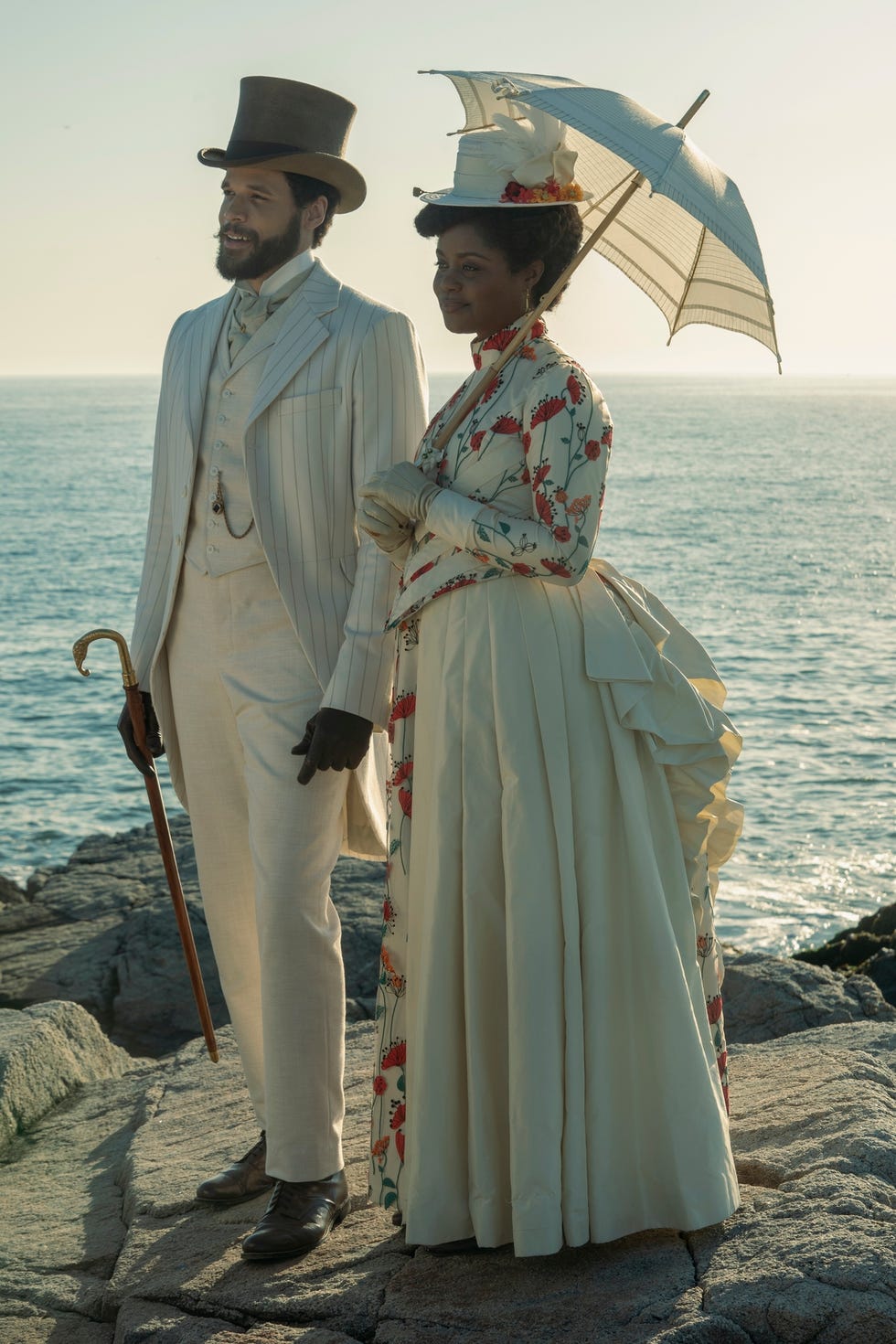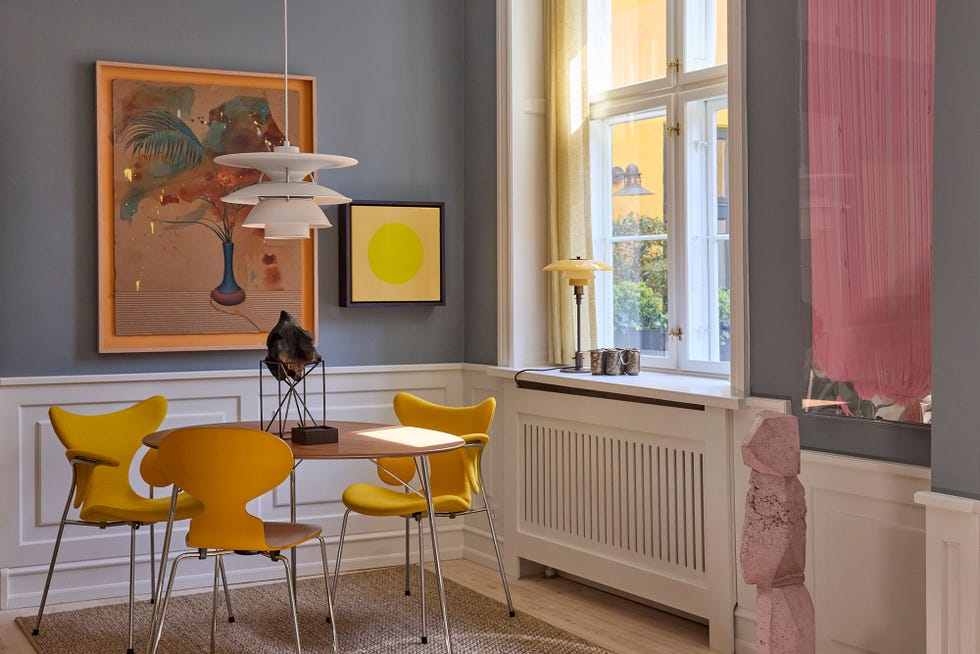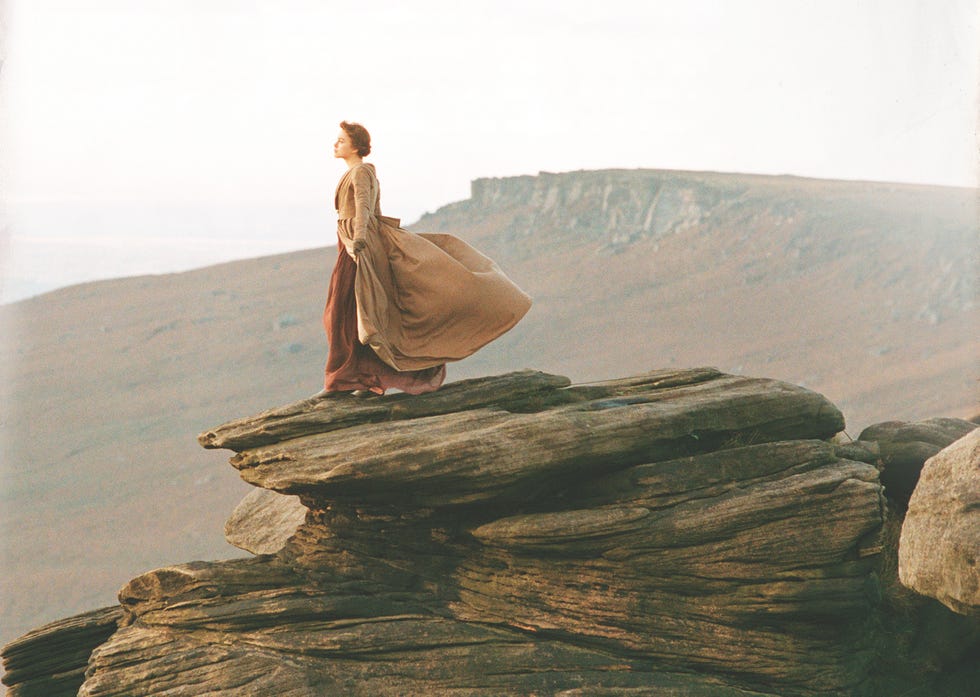Lace up your corsets, The Gilded Age is back. The long-awaited third season of HBO’s sumptuous period drama returns with all the sharp dialogue, opulent gowns, and high-society intrigue that keep fans hooked. But beyond the scandal and splendor, it’s the show’s lavish visual world that continues to dazzle. That’s largely thanks to production designer Bob Shaw, whose vision has transformed historical sites into cinematic tableaus. We spoke with Shaw about the art—and meticulous effort—of bringing The Gilded Age to life.
This season, the series expands its world once again, introducing fresh locations. “We’ve been scouting the areas around Troy, New York, and Newport for three years now,” he explains. “Our location manager, Lauri Pitkus, and I each have a mental Rolodex of places we’ve visited and hoped to use someday.”
Season 1 introduced audiences to the Van Rhijns and Russells on Manhattan’s East Side, as well as Brooklyn’s thriving Black elite. Season 2 swept East Side society off to Newport’s famed “cottages.” In season 3, the lens widens again, offering a glimpse into Newport’s lesser-known colonial core—and its historically Black neighborhoods. “That was a gift for us when it came to trying to ensure that each world had a distinct look,” Shaw says. “It was great to be able to show a part of Newport that most people are not familiar with.”
Filming took place in Rhode Island’s Newport Historic District, a remarkably preserved pocket of 18th-century architecture along the harbor and city center. The area has six National Historic Landmarks, including the city’s oldest house, the former seat of colonial and state legislatures, and the renovated Viking Hotel. “Across the street from the hotel, there is a row of houses that were all apparently Black-owned and operated back in the day,” says Shaw. “We started using that footprint in season 1—and even more extensively in this season.”
Among the standout locations is Hunter House, a Colonial-era residence built in 1748. In Season 1, it served as the stately Pennsylvania home of the Scott family, a prominent Black family from Brooklyn that includes Peggy (played by Denée Benton), an aspiring writer who works as a secretary to Agnes Van Rhijn (Christine Baranski). In this Season, Shaw says “it was a challenge to find the right tone,» he explains. «The Scotts were a privileged class within their own community—so it was a question of how grand to go, how lavish. The houses were smaller, but when it came to things like draperies and fabrics, we didn’t hold back.”
In a rare moment of quiet intimacy, the show’s trailer shows two members of Newport’s Black elite—Peggy and Dr. William Kirkland (Jordan Donica)—taking a stroll along the Cliff Walk. Dressed in their summer best—she in an ivory dress with a floral print and he in a top hat and an ivory striped suit—hinting that they might not be only in sync with their outfits.
Of course, not every space comes with period-perfect bones. One of the season’s biggest design challenges was the Tenderloin nightclub. “Sometimes, despite our best efforts, we end up with a location that needs a lot of help,” Shaw says. “The backdrop we used for the nightclub—a contemporary building in Newport—was essentially a large white box with a shallow stage and a very modern staircase.”
To erase any trace of the 21st century, Shaw leaned into 19th-century America’s fascination with Orientalist style. “I did the club in a Turkish theme, since there was a real obsession with anything deemed ‘Moorish’ during that period,” he explains. The team wrapped the space in richly patterned, self-adhesive prints, conjuring an exotic, transportive atmosphere without the need for elaborate custom sets. The result is a gritty, decadent setting that plays host to some of the season’s most charged scenes.
Research, Shaw says, is at the core of every creative choice. From sourcing historically accurate wallpaper to tracking down the perfect trim, the team has built an extensive in-house archive and regularly combs digital photo archives to get the details right. “When I started my career, finding research for state rooms on a 19th-century ocean liner could have been a challenge that involved many hours spent in various libraries,” he says. “Now an astonishing amount of things appear from a basic online search.”
But the magic lies not just in the research, he adds—it’s in how that information is interpreted, layered, and brought to life on screen. That’s what gives The Gilded Age its unmistakable visual richness—and what keeps us coming back for more.
Rachel Silva is the associate digital editor at ELLE DECOR, where she covers all things design, architecture, and lifestyle. She also oversees the publication’s feature article coverage, and is, at any moment, knee-deep in an investigation on everything from the best spa gifts to the best faux florals on the internet right now. She has more than 16 years of experience in editorial, working as a photo assignment editor at Time and acting as the president of Women in Media in NYC. She went to Columbia Journalism School, and her work has been nominated for awards from ASME, the Society of Publication Designers, and World Press Photo.




